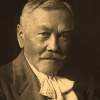
The identity of the renowned visual artist László Mednyánszky has long been a subject of contention between Hungarians and Slovaks. Born in Beckó, in present-day Slovakia, Mednyánszky maintained a connection to the region throughout his life, despite not living there permanently. He passed away before the Trianon decision, which saw the annexation of his homeland, taking place a year prior to the signing of the peace treaty. Beckó was situated in an area with a Slovak majority, although Mednyánszky hailed from a Hungarian noble family and spoke Hungarian as his mother tongue. Nevertheless, he was deeply impressed by the landscapes of Slovakia, leading Slovaks to claim him as a "painter of the Slovak landscape." This led to a divided assessment of his artistic work, with Slovakia focusing on his paintings created in the region, while Hungary largely ignored them. It was as if both sides had their own interpretation of Mednyánszky's legacy. However, in 2003-2004, strides were made towards reconciliation with a joint Slovak-Hungarian exhibition showcasing his work. Despite his multilingualism and extensive travels, Mednyánszky's identity remained rooted in his Hungarian heritage, and he also engaged in Hungarian political affairs.
